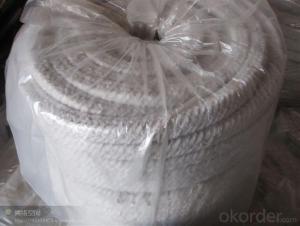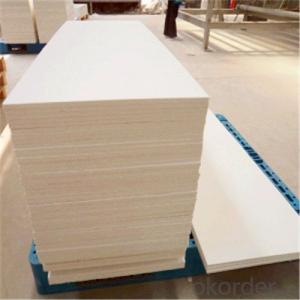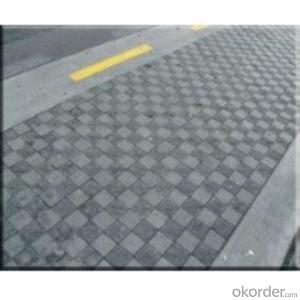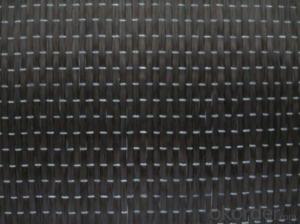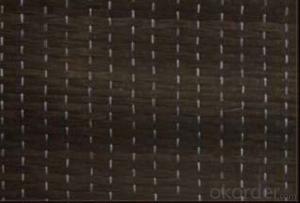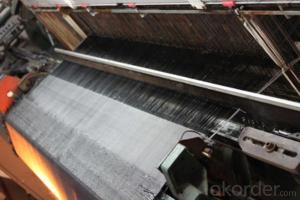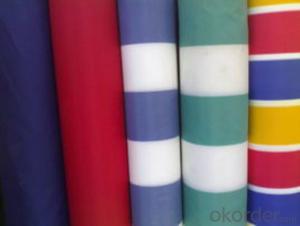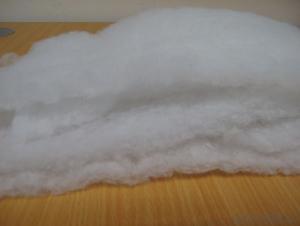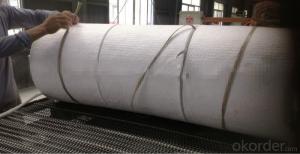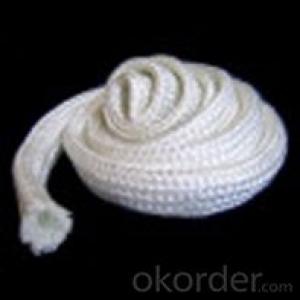ceramic fiber textiles for refractory
- Loading Port:
- Shanghai
- Payment Terms:
- TT OR LC
- Min Order Qty:
- 10 m.t.
- Supply Capability:
- 100 m.t./month
OKorder Service Pledge
OKorder Financial Service
You Might Also Like
Quick Details
| Place of Origin: | (Mainland) | Application: | Refractory | Model Number: | LBR11110904 |
| Brand Name: | Color: | pure white | Working Temperature: | 1100-1350 | |
| Grade: | ST(STANDARD) | Length: | 30000mm | Density: | 500kg/m3 |
| Width: | 10-150mm | Thickness: | 2-10mm | Fiber diameter: | 3um |
Packaging & Delivery
| Packaging Detail: | Wrapped by plastic bag inside,protected by carton box outside. |
| Delivery Detail: | 15 days after deposit |
Specifications
Ceramic Fiber Tape:
1.Glass-fiber reinforced;
2.Environmental-Friendly;
3.Easy to use;
4.Harmless to human.
Characteristics
Good compression strength.
Non-toxicity, environmental protection.
Low thermal conductivity and low thermal capacity.
Good antacid oil resistance and water vapor resistance.
Ceramic Fiber Textile
The Product Description
Ceramic fiber textile includes Ceramic fiber cloth, strap, twisted rope,
round straided rope and square straided rope.All are made from our high quality
ceramic fiber material. They can be used for high temperature applications up to
2300°F. The rope is reinforced with fiberglass filament, and optional Inconel/alloy
steel wire. Ceramic fiber textiles (cloth, tape and rope) contain a certain amount
of binder material which is normally burned at lower temperature and does not affect
the insulation property.
The three different styles are designed to fit different application needs: twisted rope
is a soft rope, while square and round braid are more dense .
Application
Common applications :door seals or caulking for ovens, furnaces and boilers,
expansion joints, cable or pipe wrapping, high temperature seals or gaskets.
widely used in welding, foundry works, aluminum and steel mills, boiler insulation
and seal, exhaust systems, shipyards, refineries, power plants and chemical plants.
We also provide many other refractory and insulation materials, so if you have demands
about them, pls contact us.
Technical data
Item | Cloth | Tape | Round rope | Square rope | Twisted Rope(Yarn) | Twisted rope(wool top) |
Classification Temp °C | 1260 | |||||
Bulk Density kg/m3 | 500±30 | |||||
Organic Content | ≤15 | |||||
Working Temp | 450(Glassfiber Filament) | |||||
1000(Metal Wire ) | ||||||
Loss After Firing(800°C)% | 12±2 | 12±2 | 12±2 | 12±2 | 12±2 | 8-10 |
Size | 30mx1mx2 30mx1mx3 | widen10-120mm length30m | Φ6-50mm
| 20x20 | Φ6-50mm
| Φ6-50mm
|
Any question,pls feel to contact us!
- Q:Are glass fiber textiles resistant to wrinkling?
- Yes, glass fiber textiles are highly resistant to wrinkling due to their inherent strength and rigidity.
- Q:What are the different additives used in glass fiber textiles?
- There are several additives that are commonly used in glass fiber textiles to enhance their performance and functionality. These additives can be classified into various categories based on their intended purpose. One category of additives used in glass fiber textiles is sizing agents. Sizing agents are applied to the glass fibers during the manufacturing process to improve their handling characteristics and adhesion to other materials. They also help to reduce static electricity and improve the wetting properties of the fibers, ensuring better impregnation of resins or other binding materials. Another category of additives is flame retardants. Flame retardants are added to glass fiber textiles to enhance their resistance to fire and reduce the risk of ignition and spread of flames. These additives can help to improve the safety of the textiles in various applications, such as in building materials, automotive interiors, and protective clothing. UV stabilizers are also commonly used additives in glass fiber textiles. These additives help to protect the textiles from degradation caused by exposure to ultraviolet (UV) radiation from the sun. UV stabilizers can extend the lifespan of the textiles and maintain their color and physical properties, making them suitable for outdoor applications. Antistatic agents are additives used to reduce or eliminate static electricity in glass fiber textiles. Static electricity can cause various issues, such as attracting dust and dirt, interfering with electronic equipment, and posing a risk of electrostatic discharge. Antistatic agents help to dissipate static charges and improve the conductivity of the textiles, ensuring a static-free environment. Furthermore, lubricants can be used as additives in glass fiber textiles to improve their processing and handling properties. These lubricants can reduce friction and facilitate the movement of fibers during the weaving or knitting process, making it easier to produce high-quality textiles. It is worth mentioning that the specific additives used in glass fiber textiles can vary depending on the intended application and the desired properties of the final product. Manufacturers carefully select the appropriate additives to meet the specific requirements and performance standards of different industries and applications.
- Q:How do glass fiber textiles perform in terms of UV resistance?
- Glass fiber textiles, known as fiberglass textiles, typically exhibit outstanding UV resistance. The inherent properties of glass fibers grant them a remarkable level of UV radiation resistance. Consequently, glass fiber textiles can endure prolonged exposure to sunlight without significant degradation or harm. The resistance to UV rays is of utmost importance for textiles, as these rays can lead to fading, discoloration, and weakening of the material over time. However, glass fibers possess a natural resistance to UV radiation due to their composition. Unlike organic fibers like cotton or polyester, glass fibers, being inorganic, are less prone to UV degradation. Glass fiber textiles find common application in scenarios where UV resistance plays a critical role, such as outdoor furniture, awnings, and sunshades. Additionally, they are extensively utilized in industries like construction and automotive, where exposure to sunlight is unavoidable. It is worth noting that although glass fiber textiles boast excellent UV resistance, their performance can still be affected by various factors, including the manufacturing process, the type of glass employed, and the presence of any protective coatings. Consequently, it is advisable to consult the manufacturer's specifications or conduct specific UV resistance tests to obtain accurate information regarding the UV resistance performance of a particular glass fiber textile.
- Q:Can glass fiber textiles be used for making shoes or footwear?
- Glass fiber textiles have the potential to be utilized in the production of shoes or footwear. These textiles possess qualities such as being lightweight, robust, and enduring, making them an excellent choice for a variety of purposes, including footwear. The incorporation of glass fiber textiles in shoes can contribute to reinforcing and stabilizing the shoe's structure, thereby enhancing both comfort and durability. Additionally, the utilization of glass fiber textiles can improve the shoes' breathability and ability to wick away moisture, creating a pleasant and dry environment for the feet. Nevertheless, it is crucial to acknowledge that glass fiber textiles may not possess the same level of flexibility or stretchability as other commonly employed footwear materials. Consequently, careful consideration and thoughtful design would be necessary to ensure that the shoes maintain a comfortable fit and the desired degree of flexibility.
- Q:Are glass fiber textiles resistant to rot and decay?
- Yes, glass fiber textiles are highly resistant to rot and decay. Unlike natural fibers such as cotton or wool, which are susceptible to microbial attacks and decomposition, glass fiber textiles are inorganic and do not provide a suitable environment for bacteria, fungi, or other microorganisms to thrive. This resistance to rot and decay makes glass fiber textiles a durable and long-lasting material option for various applications, including reinforcement in composites, insulation, and protective clothing. Additionally, glass fiber textiles are also resistant to moisture, chemicals, and UV radiation, further enhancing their longevity and performance in different environments.
- Q:How do glass fiber textiles contribute to dimensional stability?
- Dimensional stability is achieved by glass fiber textiles through their inherent properties and manufacturing process. To begin with, glass fiber textiles are created by spinning and weaving strands of glass fibers together. These fibers possess remarkable tensile strength and minimal elasticity, resulting in resistance to stretching or deformation when subjected to mechanical stress. This attribute ensures the maintenance of the textile's shape and size, even in extreme conditions. Furthermore, glass fibers exhibit a low coefficient of thermal expansion, meaning they undergo minimal expansion or contraction with temperature fluctuations. Consequently, glass fiber textiles are less susceptible to dimensional changes caused by thermal variations, such as heating or cooling. In addition, glass fibers possess resistance to moisture and chemicals, further bolstering their dimensional stability. They do not absorb water or react with most chemicals, safeguarding the textile against external factors that could induce swelling or shrinking. Moreover, the manufacturing process of glass fiber textiles involves heat treatment and resin impregnation, which enhance their dimensional stability. Heat treatment ensures the textile's shape is set, while resin impregnation adds a protective layer that enhances rigidity and prevents deformation. In summary, glass fiber textiles contribute to dimensional stability due to their high tensile strength, low elasticity, low coefficient of thermal expansion, resistance to moisture and chemicals, as well as the manufacturing processes employed. These properties render them a desirable choice for applications in industries such as automotive, aerospace, and construction, where dimensional stability is paramount.
- Q:Can glass fiber textile be used in oil and gas pipelines?
- Indeed, glass fiber textiles possess the capability to be utilized within oil and gas pipelines. Renowned for their exceptional robustness and resistance to corrosion, glass fiber textiles prove to be suitable for a multitude of applications within the oil and gas sector. By serving as reinforcement within composite pipes for oil and gas pipelines, glass fiber textiles effectively amalgamate the strength of glass fiber with the corrosion resistance of alternative materials like epoxy or thermoplastic resins, thereby engendering a pipeline solution that is both enduring and long-lasting. The utilization of glass fiber textiles within oil and gas pipelines yields the advantage of diminishing the likelihood of corrosion and augmenting the overall lifespan of the pipeline, thus rendering it a pragmatic choice for the industry.
- Q:Can glass fiber textiles be felted?
- No, glass fiber textiles cannot be felted.
- Q:Can glass fiber textiles be used in the production of outdoor furniture?
- Yes, glass fiber textiles can be used in the production of outdoor furniture. Glass fiber textiles are known for their durability and resistance to weather conditions, making them a suitable material for outdoor furniture that needs to withstand exposure to elements such as sunlight, rain, and temperature fluctuations. Additionally, glass fiber textiles are lightweight and can be easily molded into various shapes, offering design flexibility for outdoor furniture manufacturers.
- Q:Can glass fiber textiles release harmful fibers?
- Improper manufacturing, handling, or maintenance of glass fiber textiles can result in the release of harmful fibers. These textiles are created by drawing molten glass into thin fibers, which can then be woven or knitted. If these fibers are damaged during production, installation, or use, they can break down into smaller particles or fibers that may become airborne and pose health risks when inhaled. The primary concern with glass fiber textiles is the release of respirable fibers, which are very small and can deeply penetrate the lungs. Inhaling these fibers can irritate the respiratory system and cause issues like coughing, wheezing, and shortness of breath. Prolonged exposure to high levels of glass fiber dust or fibers can even lead to more severe health conditions, such as lung scarring or cancer. To mitigate the risk of harmful fiber release, it is crucial to follow proper handling procedures and use suitable personal protective equipment when working with glass fiber textiles. Manufacturers should ensure the fibers are securely bound within the textile and regularly conduct quality control checks to identify any defects or damages that could result in fiber release. Additionally, regularly maintaining and cleaning glass fiber textiles can prevent the accumulation of dust and fiber particles, thereby reducing the potential for harmful fiber release. In conclusion, while glass fiber textiles have the potential to release harmful fibers if mishandled or damaged, adhering to proper manufacturing, handling, and maintenance practices can minimize the risk and ensure the safety of those working with or exposed to these materials.
1. Manufacturer Overview |
|
|---|---|
| Location | |
| Year Established | |
| Annual Output Value | |
| Main Markets | |
| Company Certifications | |
2. Manufacturer Certificates |
|
|---|---|
| a) Certification Name | |
| Range | |
| Reference | |
| Validity Period | |
3. Manufacturer Capability |
|
|---|---|
| a)Trade Capacity | |
| Nearest Port | |
| Export Percentage | |
| No.of Employees in Trade Department | |
| Language Spoken: | |
| b)Factory Information | |
| Factory Size: | |
| No. of Production Lines | |
| Contract Manufacturing | |
| Product Price Range | |
Send your message to us
ceramic fiber textiles for refractory
- Loading Port:
- Shanghai
- Payment Terms:
- TT OR LC
- Min Order Qty:
- 10 m.t.
- Supply Capability:
- 100 m.t./month
OKorder Service Pledge
OKorder Financial Service
Similar products
New products
Hot products
Hot Searches
Related keywords
